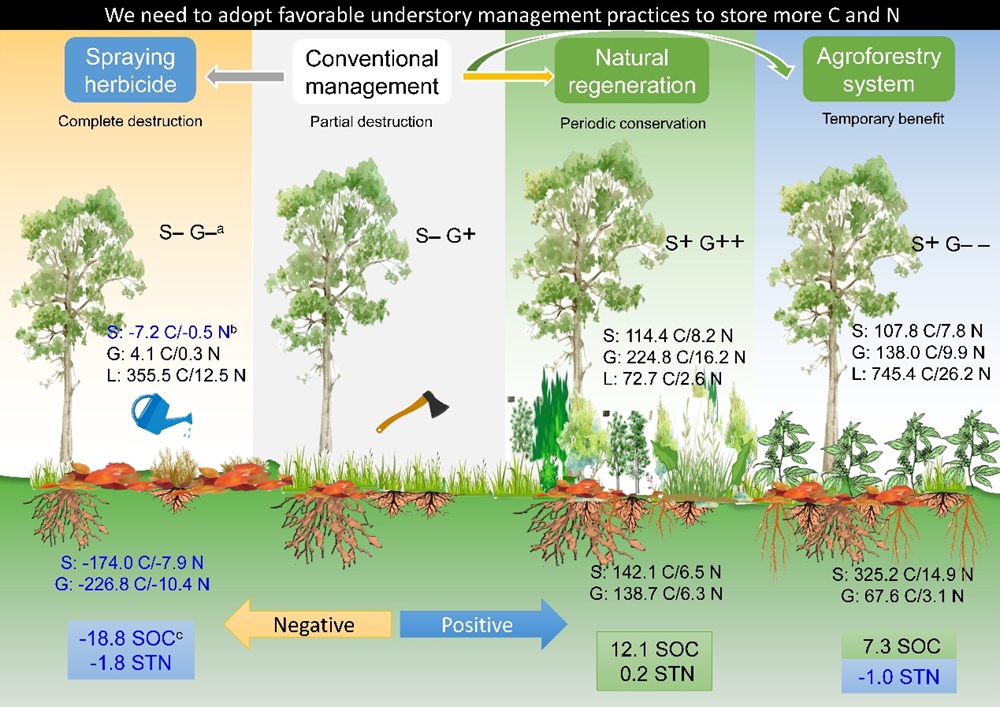Effective management of understory vegetation is crucial for forest biodiversity conservation and ecosystem functions. However, the impact of various understory management practices on key ecosystem processes, such as soil nutrient cycling in tree crop plantations, remains poorly understood.
In a study published in Nutrient Cycling in Agroecosystems, researchers from Xishuangbanna Tropical Botanical Garden (XTBG) investigated the effects of seven years of understory vegetation management on soil organic carbon (SOC) and total nitrogen (STN) storage in tropical rubber plantations in Southwest China.
The researchers quantified the 7-year cumulative effects on soil organic carbon (SOC) and total nitrogen (STN) stocks in rubber plantations under four understory management practices: (i) conventional management (RC) as the control, (ii) herbicide application (RH), (iii) natural regeneration (RN), and (iv) replacement with leguminous shrub (RA).
Seven years following four understory management practices have seen a significant variability in understory vegetation characteristics as well as SOC and STN stocks in structurally simplified rubber plantations.
Compared to conventional management, natural and man-made restoration increased native species and coverage of the understory, leading to higher above- and belowground biomass. Those practices also sporadically introduced invasive species, which may have long-term interspecific competition with native species. Conversely, herbicide application decreased the species number and belowground biomass.
The variations in SOC and STN stocks in the topsoil were attributed primarily to aboveground biomass and determined by belowground biomass in the deeper soil. Moreover, litter depth also effectively reflected SOC and STN dynamics.
The results suggest that the implementation of natural regeneration and agroforestry system in the understory of rubber plantations offered significant potential for increasing soil C and N stocks.
"Our findings have significant implications for developing sustainable understory management strategies in terms of understory vegetation protection and soil nutrient supply in tree crop plantations,” said LIU Chenggang of XTBG.
Contact
LIU Chenggang Ph.D
Key Laboratory of Tropical Plant Resources and Sustainable Use, Xishuangbanna Tropical Botanical Garden, Chinese Academy of Sciences, Menglun 666303, Yunnan, China
E-mail: liuchengang@xtbg.ac.cn
Published: 14 July 2023


